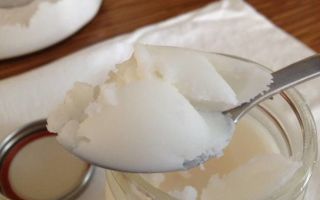Content
- 1 Composition and calorie content of internal pork fat
- 2 Why pork fat is useful
- 3 Pork fat treatment
- 4 How pork fat is used in cosmetology
- 5 The use of pork fat in cooking
- 6 How to melt pork fat at home
- 7 The harm of pork fat and contraindications
- 8 How to choose fat for melting
- 9 How much pork fat is stored
- 10 Conclusion
- 11 Reviews
Pork fat is a valuable animal product. It has truly fantastic properties, saturating the body with the necessary substances and microelements. Despite this, to this day there is debate about the need for this product in the diet. So what are the real benefits and harms of pork fat?
Composition and calorie content of internal pork fat
Pork fat is the overheated lard of an animal that is cut into small pieces and separated from the protein using heat treatment. The resulting pork fat is beneficial for the body and has a rich composition of nutrients. In terms of culinary qualities, taste and nutritional value, it is deservedly considered the best among animal fats. It consists of:
- Monounsaturated acids (50%);
- Saturated acids (41%);
- Polyunsaturated acids (7%);
- Useful vitamins;
- Mineral substances;
- Lecithin.
Nutritional value relative to other animal products:
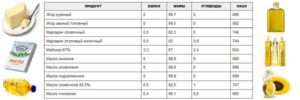
Why pork fat is useful
Any fats are the most important component for the full functioning of the body. Due to its medicinal properties, pork fat brings invaluable benefits, which are as follows:
- Protection against malfunctions of the cardiovascular system. Monounsaturated acids reduce the risk of developing a group of disorders that have a negative effect on the work of the heart;
- Help in keeping in shape. Studies have shown that moderate consumption of rendered pork fat is beneficial in helping to reduce weight, waist circumference, and cholesterol;
- Normalization of the nervous system. Monounsaturated acids reduce irritability and increase physical activity;
- Strengthening bone tissue. Acids allow the body to actively absorb calcium, which is necessary for bones and teeth;
- Maintaining the immune system. Vitamins A, E, K, D in the composition do an excellent job with vitamin deficiency and increase resistance to viral diseases.

Pork fat treatment
Pork fat is widely used not only in cooking, but also in folk medicine. Its versatile, nutrient-rich composition tends to envelop the internal organs, optimizing physiological processes. Fat is used both internally and externally - ointments, lotions, rubbing and other medicines are made on its basis.
Universal ointment recipe
Ointment is the most convenient in consistency product for external use. It is customary to cook it from pork fat and milk, given some peculiarities:
- To make a medicine, pork fat must be turned into lard, or lard (melted in a microwave oven or on a gas stove). Manipulation will lead to oxidation, during which the product does not lose its healing properties and becomes suitable for any type of consumption;
- Add 50 g of lard to 0.5 l of boiled milk and mix thoroughly;
- The mixture is left in a cool place until it cools completely and acquires the consistency of an ointment.

For joint pain
For the treatment of joints and other problems of the musculoskeletal system, it is useful to add a tablespoon of red pepper to the base. Such a composition in its benefits helps to increase blood flow and promotes rapid recovery. The ointment is rubbed in before going to bed, covering with a bandage to keep warm.
Ointment for the treatment of skin diseases
For the treatment of skin diseases, medicinal herbs, for example, calendula, are added to the ointment. The plant is pre-dried or a pharmacy mixture is used, since recently cut flowers release moisture that forms condensation. Such a useful remedy with the addition of calendula helps with:
- cuts;
- scars;
- peeling;
- frostbite;
- cracked heels;
- chapping.
Burn ointment
Pork lard is also useful for the treatment of burns, as it promotes the regeneration of the dermal integument. It is important to understand that the benefits of a universal lard ointment do not make it a first aid. Its properties are relevant only at the stage of wound healing. If you smear a fresh, open wound, you can cause irreparable harm, since living microorganisms can provoke purulent inflammation.
For coughs and colds
A universal ointment without additives is used in folk medicine and for coughs, rubbing it into the chest area. The lard “mesh” retains heat, increases blood flow and promotes the excretion of phlegm. In addition, this recipe for pork cough fat is suitable for children of any age.

The tool fights cough not only from the outside, but also from the inside. The fact is that the interior fat got its name from being inside the animal. It surrounds the organs, protecting them from temperature and mechanical damage. The mechanism of action on the respiratory tract is that the agent soothes spasms, turning a dry cough into a wet one. This allows you to quickly remove harmful toxins and microorganisms. In addition, the body warms up at a temperature and the heat decreases. It is these beneficial properties of interior fat that allow it to be used as a cure for coughs and colds.
To relieve the symptoms of the disease, a drink is prepared from milk, pork fat and honey. This requires:
- milk - 200 g;
- honey - 1 teaspoon;
- lard - 10 g.
Preparation and use: the ingredients are mixed and heated until boiling. The hot drink is consumed on an empty stomach. The therapy is carried out until the complete disappearance of the disease syndromes.
How pork fat is used in cosmetology
Cosmetologists have not ignored such a valuable and useful product of animal origin. Thanks to its fantastic effect on the skin, pork fat makes tonic and rejuvenating face masks.
The famous Cleopatra mask is based on pork fat, aloe and liquid honey. These components perfectly complement each other and help to prolong youthfulness, making the skin firm and elastic. To prepare such a useful mask at home, you need:
- pharmacy aloe juice - 40 ml;
- honey - 10 ml;
- lard - 100 g.
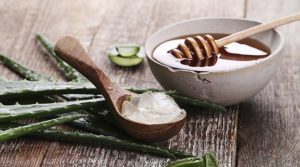
The components are mixed, heated in a water bath and left to cool at room temperature. The mask is applied to cleansed face and décolleté area.Using the product once a week gives a noticeable effect after a few months of use.
The use of pork fat in cooking
Pork fat has a pleasant smell and taste. Lard is often used in cooking and is added for canning, baking. Lard is also used fresh. A greasy product with garlic is an excellent anti-hangover agent that is beneficial in cleansing blood vessels from cholesterol and accelerates the process of removing harmful substances from the body. However, do not forget that in addition to benefits, lard lard can also bring harm if you do not use it in moderation.
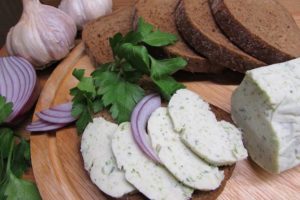
Is it possible to fry in pork fat
Studies have shown that pork fat is much better absorbed than vegetable oil. This is due to the fact that fat does not lose its beneficial properties during any heat treatment. That is why it is not only possible to cook on it, but also necessary.
How to melt pork fat at home
Ghee can be bought at the store, however, nothing beats homemade lard, so it's best to cook it yourself.
How to melt lard into fat
To make the fat tasty and retain its useful qualities, it is necessary to reflow, observing the following algorithm:
- The lard cleared of meat is cut into small pieces;
- A frying pan with a thick bottom is heated over low heat;
- The pieces are placed in a preheated container, gradually increasing the heat;
- When the bacon boils, greaves will begin to separate from it. Only after they have settled to the bottom, the fat is considered ready (the process lasts at least 2 hours);
- After turning off the gas, you can add a small amount of granulated sugar. This will give the mass a pleasant aroma;
- Lard is left in a frying pan until it cools, after which it is filtered through cheesecloth;
- The container with strained, slightly warm fat is placed in the freezer. Quick freezing will help maintain a uniform consistency and prevent lumps from forming.
How to melt pork fat
You can melt fat on the stove, in the oven or in a multicooker. There are two different ways:
- Wet. Place the diced fat in a saucepan with a little water. The mass is brought to a boil and the ingredients are completely dissolved. After cooling, the mixture is poured into a glass or ceramic container.
- Dry. This method consists in melting without adding water. Fat is placed in a frying pan, in a slow cooker or oven, at a temperature of 90 - 120C. Stirring occasionally with a wooden spatula will help maintain a uniform consistency and a pleasant delicate aroma.
The harm of pork fat and contraindications
Like any other animal product, pork fat can be harmful, so there are some contraindications. Fat in any form is not recommended for use:
- during the recovery period after surgery: a large amount of calories in pork fat can interfere with the recovery process after surgery;
- people with chronic gastritis, diabetes;
- with individual intolerance to external use.
How to choose fat for melting
When using low-quality lard when reflowing, there is a possibility of getting lard with an unpleasant smell and taste. To choose the right lard, you need to pay attention to:
- Smell. Fresh lard has a pleasant, milky aroma. Even a slight, barely perceptible smell of urea will increase significantly after heat treatment;
- Colour. A quality product is pinkish-white in color. A gray, yellow or greenish tint indicates that it is stale or stored incorrectly, which can reduce the benefits and impart unpleasant tastes;
- Meat layers. Such lard is more suitable for frying, but not for melting;
- Thickness. The optimal piece thickness is 3-6 cm.
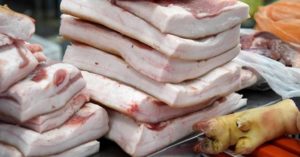
Additional information on how to choose the right lard:
How much pork fat is stored
The raw material retains its useful properties during a fairly long storage in any form. However, the recommended shelf life in the refrigerator is no more than 2 years in a hermetically sealed container.
Conclusion
The benefits and harms of pork fat directly depend on the quantity and quality of the product consumed. If you take into account all the recommendations, the beneficial properties of lard significantly exceed the harm that it can cause.

